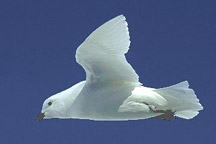Gruber Mountains on:
[Wikipedia]
[Google]
[Amazon]
 The Gruber Mountains (
The Gruber Mountains (
 The Gruber Mountains (
The Gruber Mountains (German
German(s) may refer to:
* Germany (of or related to)
**Germania (historical use)
* Germans, citizens of Germany, people of German ancestry, or native speakers of the German language
** For citizens of Germany, see also German nationality law
**Ger ...
: Otto-von-Gruber-Gebirge) are a small group of mountains consisting of a main massif
In geology, a massif ( or ) is a section of a planet's crust that is demarcated by faults or flexures. In the movement of the crust, a massif tends to retain its internal structure while being displaced as a whole. The term also refers to a ...
and several rocky outliers, forming the northeast portion of the Wohlthat Mountains
Wohlthat Mountains (german: Wohlthatmassiv) is a large group of associated mountain features consisting of the Humboldt Mountains, Petermann Ranges, and the Gruber Mountains, located immediately east of the Orvin Mountains in Fimbulheimen in ...
in Queen Maud Land
Queen Maud Land ( no, Dronning Maud Land) is a roughly region of Antarctica claimed by Norway as a dependent territory. It borders the claimed British Antarctic Territory 20° west and the Australian Antarctic Territory 45° east. In addit ...
, Antarctica. They were discovered and plotted from air photos by the Third German Antarctic Expedition
New Swabia ( Norwegian and german: Neuschwabenland) was a disputed Antarctic claim by Nazi Germany within the Norwegian territorial claim of Queen Maud Land and is now a cartographic name sometimes given to an area of Antarctica between 20°E ...
(GerAE), 1938–39, under Alfred Ritscher
Alfred Ritscher (23 May 1879 in Bad Lauterberg – 30 March 1963 in Hamburg) was a German polar explorer. A ''Kapitän zur See'' in the ''Kriegsmarine'', he led the third German Antarctic Expedition in 1938–39, which mapped the New Swabia ( ...
. The mountains were remapped by the Sixth Norwegian Antarctic Expedition The sixth Norwegian Antarctic Expedition (''Den norske antarktisekspedisjonen'') was a scientific expedition to Queen Maud Land in Antarctica. The expedition was based at Norway Station () which was located on the Fimbul Ice Shelf bordering the co ...
, 1956–60, who named them for Otto von Gruber
Otto is a masculine German given name and a surname. It originates as an Old High German short form (variants ''Audo'', ''Odo'', ''Udo'') of Germanic names beginning in ''aud-'', an element meaning "wealth, prosperity".
The name is recorded fr ...
, the German cartographer who compiled maps of this area from air photos taken by the GerAE. This feature is not to be confused with "Gruber-Berge," an unidentified toponym applied by the GerAE in northern the Mühlig-Hofmann Mountains
The Mühlig-Hofmann Mountains (german: Mühlig-Hofmann-Gebirge) is a major group of associated mountain features extending east to west for between the Gjelsvik Mountains and the Orvin Mountains in Queen Maud Land, East Antarctica. With its sum ...
.
Named features
Several features within the Gruber Mountain range have been charted and named by expeditions and survey groups. Mount Bastei () is a prominent buttress-typemountain
A mountain is an elevated portion of the Earth's crust, generally with steep sides that show significant exposed bedrock. Although definitions vary, a mountain may differ from a plateau in having a limited summit area, and is usually higher t ...
high, west of Mount Mentzel. It was discovered and named Bastei, meaning bastion, by the German Antarctic Expedition, 1938–39, under Ritscher.
Ufsekammen Ridge () is an arc-shaped rock ridge, long, between Mount Schicht
Mount Schicht () is a prominent mountain with several summits, rising 4 nautical miles (7 km) west-southwest of Ritscher Peak in the Gruber Mountains of Queen Maud Land. The feature was discovered by the German Antarctic Expedition under Rit ...
and Ufsebrotet Bluff Ufsebrotet Bluff () is a steep bluff located 2 miles (3.2 km) south of Mount Zimmermann in the central Gruber Mountains of the Wohlthat Mountains
Wohlthat Mountains (german: Wohlthatmassiv) is a large group of associated mountain features con ...
. It was discovered and plotted from air photos by the Third German Antarctic Expedition, 1938–39. The Norwegian Antarctic Expedition of 1956–60 replotted it from air photos and surveys and named it Ufsekammen (the bluff ridge).
Important Bird Area
A 500 ha site in the mountains, in the vicinity of Lake Untersee, has been designated anImportant Bird Area
An Important Bird and Biodiversity Area (IBA) is an area identified using an internationally agreed set of criteria as being globally important for the conservation of bird populations.
IBA was developed and sites are identified by BirdLife Int ...
(IBA) by BirdLife International
BirdLife International is a global partnership of non-governmental organizations that strives to conserve birds and their habitats. BirdLife International's priorities include preventing extinction of bird species, identifying and safeguarding ...
because it supports about 10,000 breeding snow petrel
The snow petrel (''Pagodroma nivea'') is the only member of the genus ''Pagodroma.'' It is one of only three birds that has been seen at the Geographic South Pole, along with the Antarctic petrel and the south polar skua, which have the most s ...
s, estimated in 1983.
References
External links
* Important Bird Areas of Antarctica Seabird colonies Mountain ranges of Queen Maud Land Princess Astrid Coast {{PrincessAstridCoast-geo-stub